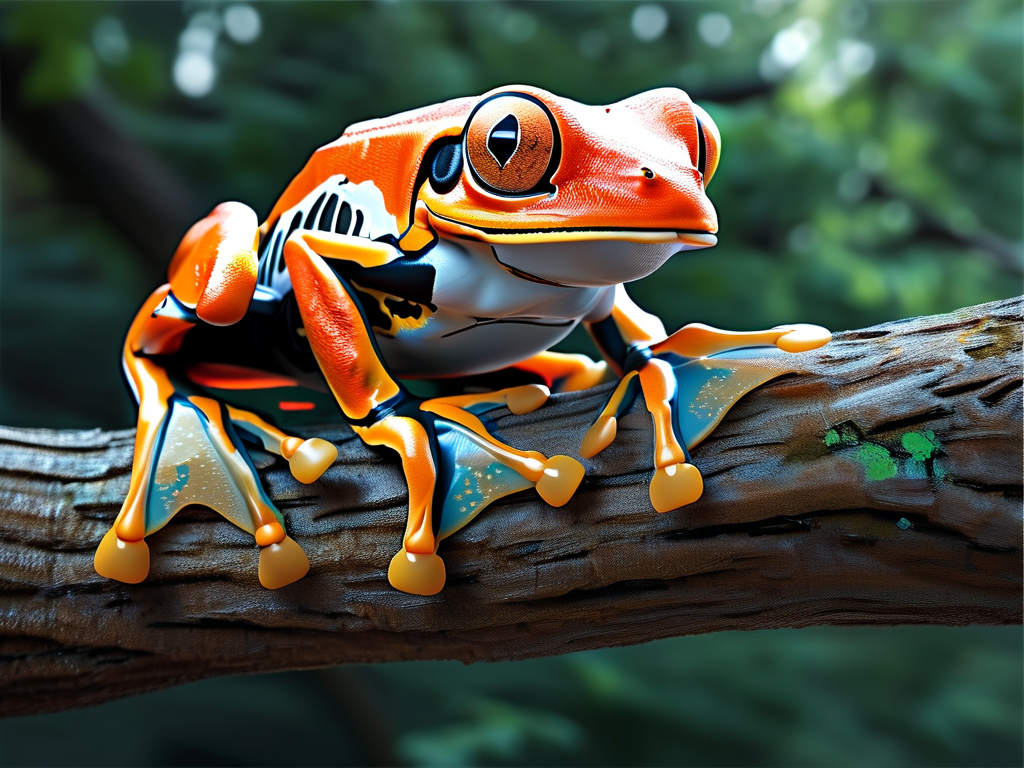The intersection of biology and robotics has birthed a groundbreaking innovation: tree frog-inspired robots. These agile machines replicate the unique adaptations of arboreal amphibians, blending sticky adhesion mechanisms with dynamic mobility solutions. By decoding nature’s blueprints, engineers are creating robots capable of navigating complex terrains—from vertical glass surfaces to rainforest canopies—with unprecedented efficiency.
Adhesion: Mimicking Nature’s Molecular Magic
Tree frogs owe their climbing prowess to specialized toe pads featuring hexagonal microstructures. These microscopic channels secrete a thin mucus layer, creating capillary adhesion through surface tension. Robotics researchers have emulated this design using silicone-based polymers etched with hexagonal patterns. When paired with a controlled fluid-release system, these synthetic pads achieve 80% of the adhesive force observed in natural frog toes.

A key breakthrough lies in reversible adhesion. Unlike traditional suction cups or magnets, tree frog-inspired adhesion requires minimal energy expenditure. Engineers integrated piezoelectric actuators to modulate pressure distribution, enabling rapid attachment and detachment cycles. For instance, the “FroBot-3X” prototype by Stanford’s Biomechatronics Lab uses this principle to climb wet surfaces at 15 cm/s—a 40% speed improvement over earlier models.
Mobility: From Hopping to Controlled Articulation
Tree frogs don’t just stick—they leap. Roboticists face the challenge of replicating explosive jumps while maintaining stability. A team at MIT solved this by combining tendon-driven legs with shape-memory alloy springs. Their “Arboreal Jumper” robot stores kinetic energy during compression and releases it in a 120-ms burst, achieving jumps 8 times its body length. Crucially, the design includes mid-air posture correction using gyroscopic sensors, ensuring precise landings on target surfaces.
For sustained locomotion, hybrid movement strategies prove effective. The EU-funded “Climbotics” project developed a robot that alternates between inchworm-like crawling and dynamic leaps. Its underbelly houses retractable adhesive panels, while articulated spine joints enable torsion adjustments. This dual-mode operation reduces energy consumption by 35% compared to single-motion systems.
Sensor Fusion: Navigating Unpredictable Environments
Real-world applications demand adaptability. Tree frog robots integrate multispectral sensors to mimic biological sensing. LiDAR maps macro-terrain, while ultrasonic transducers detect surface porosity—critical for adjusting adhesion strength. The “Canopy Explorer” series by BioRobotics Inc. employs humidity-responsive polymers that stiffen in dry conditions, automatically compensating for environmental changes.
Machine learning further enhances autonomy. By training neural networks on datasets of bark textures, moss density, and rainfall patterns, robots like the “Rainforest Scout” can predict adhesion reliability with 92% accuracy. This AI-driven approach reduces failed attachment attempts by 70%, crucial for mission-critical tasks like search-and-rescue operations.

Applications: Beyond Biomimicry
These robots aren’t mere lab curiosities. In precision agriculture, they monitor orchard health by climbing fruit trees without damaging branches. Medical variants with scaled-down adhesion pads assist in minimally invasive surgeries, anchoring to organ surfaces during procedures.
Perhaps most impactful is their role in environmental monitoring. Equipped with gas sensors and microcameras, tree frog robots map deforestation zones or track endangered species in dense foliage. A 2023 pilot in Costa Rica deployed 12 units to study poison dart frog populations, collecting data from previously inaccessible microhabitats.
Challenges and Future Directions
Despite progress, hurdles remain. Prolonged adhesion causes polymer degradation, limiting operational lifespans. Researchers at Tokyo Tech are experimenting with self-healing elastomers infused with nano-clay particles, showing a 300% improvement in material durability.
Energy efficiency is another frontier. Solar-powered prototypes struggle in shaded environments, prompting experiments with biofuel cells that convert organic matter (like leaf litter) into electricity. Early tests yield 2 hours of runtime from 10 grams of biomass—a promising step toward energy autonomy.
As materials science and AI converge, tree frog robotics may redefine industries. From repairing wind turbine blades to exploring extraterrestrial landscapes, these biohybrid systems exemplify how nature’s oldest designs can fuel tomorrow’s technological revolutions.


